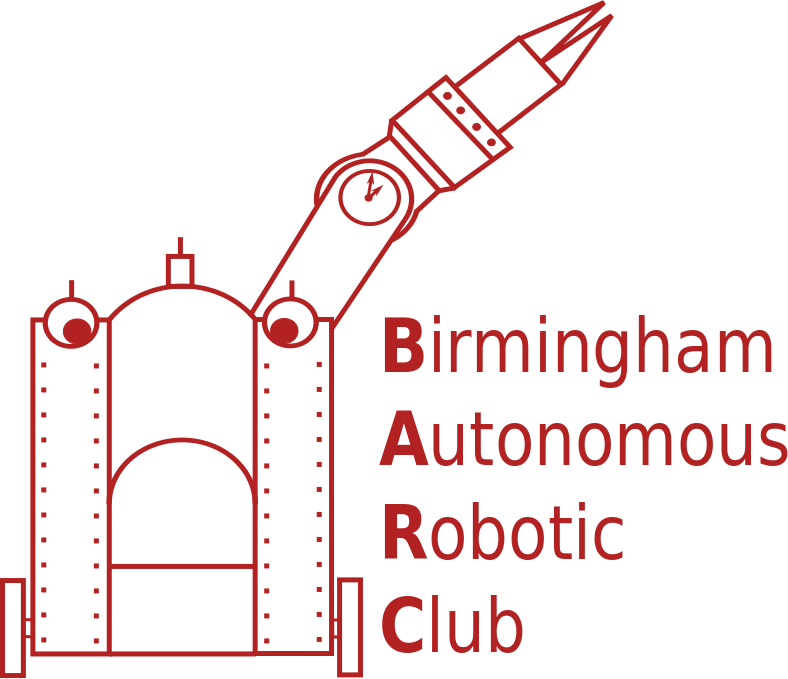
Birmingham Autonomous Robotic Club (BARC) connects students from the School of Computer Science with a strong motivation in robotic applications and competitions. We are extending our club in order to bring together students across many disciplines within the University, mainly the School of Electronic, Electrical and Systems Engineering and the School of Mechanical Engineering. Our members strongly benefit from the very close cooperation between them and sharing different expertise.
Our interest in robotics is expressed throughlearning by doing. In 2014 we participated in numerous public engagement and outreach events and organised hands-on robotic tutorials/workshops. Most importantly, we put the University of Birmingham on the map of successful universities in the high profile robotic competition RoCKIn@Home by winning two prizes in our first attempt ever!

BARC team and robot Dora after RoCKIN@Home 2014 in Toulouse
The RoCKIn robotic competition stands for “robot competitions kicking innovation” and is an EU-funded project. The RoCKIn@Home competition contributes to the field of domestic service robotics which tackles the issues of the aging population. The challenge is not only to robustly solve a real world problem, e.g. assisting an elderly person in a flat but also to develop innovative research and solutions. As we strongly believe that robots can positively affect our world, we have decided to contribute to this challenge.
The competition has three tasks; last year we participated in two of them, which we also won:
- Getting to Know My Home: When a robot is asked to bring an object for a person, e.g. “Bring me the newspapers on the armchair”, it must know where the armchair is located, as the position of furniture and objects may change during the day. Therefore, a robot must keep updating its map of the environment by detecting these changes.
- Welcoming Visitors: When a person does not feel well, he or she may stay in bed and the robot is in charge of recognising who is ringing the bell of the flat. It uses the camera mounted outside of the flat in order to recognise the faces and uniforms of people. If the person is allowed to enter (e.g. a doctor or a deliveryman), the robot accompanies them to the area where the person is allowed and the robot makes sure that the person leaves the flat again.

Our robot successfully recognises a delivery man and shows him the way to the kitchen
As the duration of this challenge is two years, we primarily focused on building robust and repeatable robot behaviours during the first year. This is really important as many robot-related problems are solved in scientific papers and labs but their deployment in the real world is still problematic. Therefore, we built our system from existing state-of-the-art methods focusing on increasing reliability. We won the first prize for two of the competition's challenges and we can therefore claim that we succeeded in our mission for the first year. Moreover, during our trials we collected data that will contribute towards the scientific benchmarking of related research.
At the end of November 2015 we are again competing in RoCKIn@Home, this year in Lisbon. As we have a robust system our focus is now on implementing cutting edge innovative research, building on our reliable existing system. This year we are also going to participate in functional benchmarks:
- Object recognition: The evaluation of the robot’s capability to recognise everyday household objects
- Navigation: The scientific evaluation of the precision and safety of the robot’s navigation system.
- Speech recognition: A test to scientifically evaluate the robot’s capability to understand speech
We would like to thank Packt Publishing Limited for their sponsorship, as well as the School of Computer Science and College of Engineering and Physical Sciences for supporting our activities.
If you like robotics and our activities:
- get in touch at eps-community@bham.ac.uk
- like us on Facebook
- follow us on Twitter @barc_team